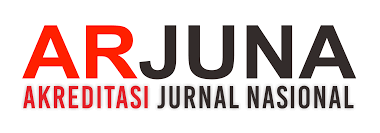Analysis of Misconceptions in Indonesian: A Study of Semantics and Social Customs
DOI:
https://doi.org/10.24114/edukasikultura.v12i2.69324Keywords:
Misinterpretation, Lexical Duality, Reverse Antonyms, Semantic Erosion, SociolinguisticsAbstract
This qualitative case study analyzes the phenomenon of misinterpretation of 14 keywords (including "apa," "absensi," and "emotion") in Indonesian. The goal was to identify and analyze the linguistic mechanisms and social factors that cause deviations from the standard definition (KBBI). The results indicate that misinterpretation is a systematic process driven by digital habits and cognitive simplification. Two main mechanisms of meaning destruction were identified: Reverse Antonyms (Acuh, Absensi) and Emotional Specialization (Emosi, Anarkis). This analysis demonstrates Lexical Duality—a tension between formal and social language—where the frequency of informal use overrides the authority of the KBBI. The implication is Semantic Erosion of Accuracy, which complicates critical language teaching and distorts public understanding of policy issues (e.g., "Subsi" is equated with "Discount"). A limitation of this study is the small sample size (14 words), so further studies using mixed methods to quantitatively measure the frequency of misinterpretation are recommended.References
Amilia, F., & Anggraeni, A. W. (2017). SEMANTIK Konsep dan Contoh Analisis. MADANI.
Apendi, A. N., Ramadhani, A. F., & Maudi, W. (2025). Dampak Serapan Asing terhadap Kemurnian Bahasa Indonesia Dikalangan Generasi Muda (Vol. 4).
Arsanti, M. L. N. s., & Setiana, N. (n.d.). Pudarnya Pesona Bahasa Indonesia di Media Sosial (Sebuah Kajian Sosiolinguistik Penggunaan Bahasa Indonesia). 1–12.
Creswell, J. W. (n.d.). Creswell-ResearchDesign.
Devianty, R. (2021). SALAH KAPRAH DALAM BAHASA INDONESIA: TINJAUAN MORFOFONEMIK. EUNOIA: JURNAL PENDIDIKAN BAHASA INDONESIA, 1. http://jurnaltarbiyah.uinsu.ac.id/index.php/eunoia/userJournal
Fadliansyah, F. H. S. (2024). BUKU AJAR BAHASA INDONESIA (Berlian Nursyanti M).
Fajar, M., Alberth, & ARG Yazid Muhammad. (2022). BENTUK KATA SERAPAN ASING DAN PERUBAHANNYA DI MEDIA SOSIAL YOUTUBE. Jurnal Pendidikan Bahasa, 11.
Febriana, I., & dkk. (2025). ANALISIS KESALAHAN BERBAHASA INDONESIA (SALAH KAPRAH) DI LINGKUNGAN MAHASISWA FMIPA UNIVERSITAS NEGERI MEDAN. JMA), 3(2), 3031–5220. https://doi.org/10.62281
Hijrah, N., Rialni, D. A. P., Maysarah, M., Sari, Y., & Adisaputera, A. (2024). Pergeseran Makna dan Ekspresi Identitas Penggunaan Bahasa Gaul di Media Sosial. Narasi: Jurnal Kajian Bahasa, Sastra Indonesia, Dan Pengajarannya, 2(1), 93–100. https://doi.org/10.30762/narasi.v2i1.3053
Hollweck, T. (2015). Robert K. Yin. (2014). Case Study Research Design and Methods (5th ed.). . Canadian Journal of Program Evaluation, 30(1), 108–110. https://doi.org/10.3138/cjpe.30.1.108
Maghfiroh. (2022). BAHASA INDONESIA SEBAGAI ALAT KOMUNIKASI MASYARAKAT DALAM KEHIDUPAN SEHARI-HARI. Komunikologi : Jurnal Ilmiah Ilmu Komunikasi, 19.
Meysitta, L. (2018). Perkembangan Kosakata Serapan Bahasa Asing dalam KBBI.
Payuyasa, I. Y. (2000). Salah Kaprah Penggunaan Bahasa Indonesia Di Ranah Publik.
Ramadan, S., Affandi, S., & Mulyati, Y. (n.d.). SALAH KAPRAH PEMAKNAAN KATA DALAM BAHASA INDONESIA DAN UPAYA PERBAIKANNYA. KB Kongres Bahasa Indonesia.
Safarudin, R., & dkk. (2023). Penelitian Kualitatif. INNOVATIVE: Journal Of Social Science Research, 3. https://j-innovative.org/index.php/Innovative
Saleh, S., Pd, S., & Pd, M. (n.d.). ANALISIS DATA KUALITATIF Editor: Hamzah Upu.
Sudaryanto, W. S. (2020). KAMUS BESAR BAHASA INDONESIA EDISI KELIMA DALAM PEMBELAJARAN BAHASA INDONESIA (PERSPEKTIF FILSAFAT PENDIDIKAN BAHASA). LATERALISASI, 08. http://jurnal.umb.ac.id/index.php/lateralisasi/
Sufiatun. (n.d.). Prosiding Seminar Nasional Linguistik dan Sastra (SEMANTIKS) 2021 Pola Asuh Orang Tua Toxic Parents Pada Anak Di Youtube In Middle Of The Blackhole (Kajian Semantik Dan Pragmatik). https://jurnal.uns.ac.id/prosidingsemantiks
Sutarma, G. P., Jendra, W., Bagus, I., Adnyana, A., Politeknik, J. P., Bali, N., Administrasi, J., & Politeknik, N. (2022). ANALISIS SALAH KAPRAH PENGGUNAAN BAHASA INDONESIA DALAM KARYA TULIS ILMIAH.
Suyata, P. (n.d.). BEBERAPA PERUBAHAN SEMANTIK LEKSIKAL PADA BAHASA INDONESIA. 53–63.
Tenis, A. (2024). PERGESERAN MAKNA DALAM KOSAKATA BAHASA INDONESIA: ANALISIS PERCAKAPAN SEHARI-HARI. EL-FATA: JURNAL ILMU TARBIYAH Учредители: STAI Miftahul Ulum Pamekasan, 4(2), 92–117.
Wijana, I. D. P. (2021). Pengantar Sosiolinguistik (Dewi, Ed.).
Zahrul, M., Bajuri, J., Rahman, F., & Ilma, A. A. (2024). PERKEMBANGAN BAHASA DI MEDIA SOSIAL: DARI BAHASA GAUL HINGGA SINGKATAN POPULER. Jurnal Pujangga, 10(2), 2024.
Downloads
Published
How to Cite
Issue
Section
License
Copyright (c) 2025 Frima Luthfi Lestari

This work is licensed under a Creative Commons Attribution 4.0 International License.

This work is licensed under a Creative Commons Attribution 4.0 International License
Authors who publish with this journal agree to the following terms:
- Authors retain copyright and grant the journal right of first publication with the work simultaneously licensed under Creative Commons Attribution 4.0 International License that allows others to share the work with an acknowledgement of the work's authorship and initial publication in this journal.
- Authors are able to enter into separate, additional contractual arrangements for the non-exclusive distribution of the journal's published version of the work (e.g., post it to an institutional repository or publish it in a book), with an acknowledgement of its initial publication in this journal.Penulis.
- Authors are permitted and encouraged to post their work online (e.g., in institutional repositories or on their website) prior to and during the submission process, as it can lead to productive exchanges, as well as earlier and greater citation of published work (Refer to The Effect of Open Access).



